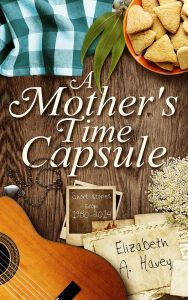Where I Should Be: A Writer’s Sense Of Place
 Titles can’t be copyrighted, so I am using most of one created by Native American writer, Louise Erdich. The piece is from The New York Times Book Review of July, 1985. It is wrinkled and worn. That’s okay. The words are what matter.
Titles can’t be copyrighted, so I am using most of one created by Native American writer, Louise Erdich. The piece is from The New York Times Book Review of July, 1985. It is wrinkled and worn. That’s okay. The words are what matter.
Yes, it’s the words. Ten days ago my computer died. All I could think about was THE WORDS—all my notes, the newest version of my novel, other pieces and novels stored on my hard drive. I’ve been a fortunate person, only losing personal items in a major flood years ago, which did include books, so many soggy books.
But when you think you might have lost hours of words…But my data was saved, thanks to the tech gods. Which means I am back in my place, writing about my place, allowing the scenery and the sounds of my life that are part of me to fall onto the page.
WRITING IS ALWAYS ABOUT PLACE
Erdrich writes: In a tribal view of the world, where one place has been inhabited for generations, the landscape becomes enlivened by a sense of group and family history. …a traditional storyteller fixes listeners in an unchanging landscape combined of myth and reality. People and place are inseparable.
When I read these words, I realize they are welded to my novel which takes place in a northside neighborhood of Chicago, near where I went to college, that could be Rogers Park. I say could be, because novel writing allows imagination to alter things. When my novel begins with the main character (MC) not wanting to move from that neighborhood, I can relate to the twenty years I lived on a tree-lined street south of Chicago, where hopscotch squares filled the sidewalk and your bike was really the pony that took you round and round a few Chicago blocks. And in the first few pages of my novel, I strive to take you to that memory place that might carry you to something similar. Because PEOPLE AND PLACE ARE INSEPARABLE.
She pushed on, feet slapping on sidewalks, one cement square worn, another fractured—prickly weeds breaking through—the familiar straight-on Chicago blocks of her Near North Side neighborhood. Step on a crack? Break your mother’s back…Change was endemic to living, and it was happening here, block after block, street after street, yet the place still familiar, like lines on her palms: the brick house whose roof collapsed, needing a year for repair; its frame neighbor whose garage burned down, never rebuilt; the row houses on Lawn Avenue, most in need of paint, all ornamented with containers of scarlet geraniums, planters of white petunias. After all, it was past Mother’s Day, planting time. And the house on the corner of Lawn and Lunt, a warped “Welcome” sign on the door of its disintegrating summer porch—screens never washed or repaired, rips increasing to be penetrated by bees and mosquitoes as well as slanting sleet.
I can sit at my computer in Southern California and unite myself once again with the sounds, smells and experience of a great part of my life. As Erdrich writers: Our suburbs and suburban life may be more sustaining and representative monuments than Mount Rushmore.
DO YOU THINK ABOUT PLACE WHEN CHOOSING A BOOK?
 Many readers follow patterns in their reading choices. They read everything by authors who write about the Outer Banks, New Orleans, New York City, New England, Great Britain, Nazi Germany, Russia. Eudora Welty wrote about PLACE in fiction, begging for some permanence to sustain that fiction: It is only too easy to conceive that a bomb that could destroy all traces of places as we know them, in life and through books, could also destroy all feelings as recognition, memory, history, valor, love, all the instincts of poetry and praise, worship and endeavor, are bound up in place.
Many readers follow patterns in their reading choices. They read everything by authors who write about the Outer Banks, New Orleans, New York City, New England, Great Britain, Nazi Germany, Russia. Eudora Welty wrote about PLACE in fiction, begging for some permanence to sustain that fiction: It is only too easy to conceive that a bomb that could destroy all traces of places as we know them, in life and through books, could also destroy all feelings as recognition, memory, history, valor, love, all the instincts of poetry and praise, worship and endeavor, are bound up in place.
The ability to read a poem, watch a film, or even see a film clip of a news event means more to us, stays with us–if there is recognition of PLACE–either that specific place, or in fiction, one that haunts, brings back memories, places you on the sidewalk where the screens of a porch require repair. Or pulls you in so that for the time you are reading you say: Here I am, and where I want to be.
Erdrich insists that a writer must have a place to love and to be irritated with. She writes: Through the study of a place, its crops, products, paranoias, dialects and failures, we come closer to our own reality. It is difficult to impose a story and a plot on a place. But truly knowing a place provides the link between details and meaning. LOCATION, whether it is to abandon it or draw it sharply, is where we start.
Yes, we all start someplace and often we take that place into our hearts when we move or leave our beginnings. But they stay with us. In airplanes we can escape gravity, but when we look down, we cannot escape the need to identify with some place on the earth–a place either big or small that rises up to hold us so that we call it home.
Reading a work of fiction can pull you into another world, but that story will not resonate, will not hold you if there isn’t something within the tale that you have already felt or experienced. There must be a touchstone to your reality or experience to keep you reading: the Chicago sidewalk, the New York skyline, the openness of the hero, the strength of the heroine, the sorrow or joy that ends the tale. So we must all keep reading and of course—keep writing, preserve place, touch our reality.
—
A former teacher of English and a maternity RN, I attended the Iowa Summer Writing Workshops while working as a proofreader for Meredith Books. In 2015, Foreverland Press published my story collection, A Mother’s Time Capsule. A member of the Women’s Fiction Writers Association, I write fiction inspired by strong women… and one surprising thing about me, I co-wrote Miami Ink: Marked for Greatness.
Twitter: https://twitter.com/BoomerHighway
Facebook: https://www.facebook.com/elizabeth.a.havey
Pinterest: https://www.pinterest.com/bethhavey/
Category: On Writing































Hi Beth! Such a great reminder. We all need to draw on what we know deep down and a “place” that feels real to us will feel real to others as well. Obviously the reverse is true as well. I LOVE to be pulled into a story that has true place to it as well as true people. Thank you for these reminders. And continued good luck with your novel. ~Kathy